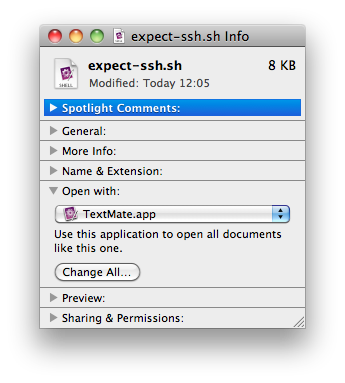When reselling a Mac, it's nice to give the new owner an experience similar to buying a new Mac. This means reinstalling a clean copy of OS X and, if you're super nice, installing the latest software updates and additional software. Finally, the Setup Assistant needs to be reset so that it runs when the new owner turns on the computer.
Note: The steps below were used to prepare a MacBook Pro running OS X Leopard for resale. Although the steps are similar for other versions of OS X, I have only tested them with Leopard. (Update: Matt mentioned in the comments that he successfully used these steps on OS X 10.6.)
Backup Your Data
If the Mac you're reselling is your own, you should do a full system backup before proceeding.
My favorite method for doing this is to use an external USB hard drive and Carbon Copy Cloner (free). Carbon Copy Cloner can be used to take a snapshot of your entire drive and make it bootable. This means you can actually boot from your backup drive, given you're booting from identical hardware. At the very least, you'll have an identical copy of everything on the computer.
You can also use Time Machine to backup your data. I don't use Time Machine, so I cannot recommend it.
The bottom line is, you want to backup anything important on the Mac you're reselling because the next steps will erase everything.
Reinstall Mac OS X Leopard
- Insert Mac OS X Leopard Install Disc
- Restart the computer
- Hold down the Option key while the computer is restarting. The system will then prompt you to select a startup disk. Choose the Mac OS X Leopard Install Disc.
- On the "Select a Destination" screen, click "Options" and choose "Erase and Install". This will ensure a clean installation of Mac OS X Leopard.
- Follow the remaining steps to install Mac OS X; they are all self explanatory.
- When the installation finishes, the Mac will reboot and you'll be presented with the Setup Assistant.
If you're not interested in installing the software updates or any additional software, press Command+Q to quit the Setup Assistant and choose Shutdown. The next time you turn on the machine, the Setup Assistant will launch again.
Install Software Updates & Additional Software
If you want to be super nice to the new owner of your Mac, you'll need to complete the Setup Assistant and create a temporary user. We will use that user to download and install the software updates as well as install any additional applications (Firefox, MS Office, etc.). Once we're done updating the system and installing software, we'll delete the temporary user and reset the Setup Assistant.
- Complete the Setup Assistant and create the first user account (we'll delete this user and reset the Setup Assistant later, so it doesn't matter what you use). Make note of the shortname for the user you create as we'll need that in the next section (e.g., user "Raam Dev" will probably have a shortname of "raamdev").
- At this point, you should be logged into the newly reinstalled system using the temporary account you created.
- Connect to the Internet (using a wired or wireless connection)
- Run Software Update (Apple Icon -> Software Update) and install any available updates. This may take awhile!
- After the system reboots, run Software Update again. There will most likely be more updates to install. Repeat this process until there are no more updates to install.
- Install any additional applications, being sure to install for "All Users" if prompted. Also, make sure the new applications are installed in
/Applications/ and not ~/Applications/
Clean Up and Reset the Setup Assistant
Now that we've installed the latest updates and installed any additional software, we need to clean things up. First, we'll delete the temporary user we created and then we'll reset the Setup Assistant to ensure it launches the next time we boot up.
First, you'll need to start the Mac in Single User mode by restarting and holding down Command+S. This mode does not have a graphical user interface (GUI) and is entirely command-based.
Once you're in Single User mode, run the following commands and press Enter at the end of each line. (Note: The $ represents the command prompt; you don't actually type the $.)
By default, the hard drive is mounted as read-only in Single User mode. Before we continue, we need to make the disk writable:
[code lang="bash"]
$ mount -uw /
[/code]
Next, we clean up that temporary user we created. Replace USERNAME with the shortname of the user you created in the previous section.
[code lang="bash"]
$ rm -R /Library/Preferences/
$ rm -R /Users/USERNAME/
$ /bin/launchctl load /System/Library/LaunchDaemons/com.apple.DirectoryServices.plist &
$ dscl . -delete /Users/USERNAME
[/code]
And lastly, we need to reset the Setup Assistant so it runs the next time we start the Mac:
[code lang="bash"]
$ rm /var/db/.AppleSetupDone
[/code]
Now that everything is cleaned up and the Setup Assistant has been reset, we can shutdown the system and ship or deliver the Mac to its new owner!
[code lang="bash"]
$ shutdown -h now
[/code]
If you want to boot the Mac to make sure it looks the way it should when the user gets it (i.e., the intro video and Setup Assistant start), just make sure you press Command+Q and choose Shutdown.


